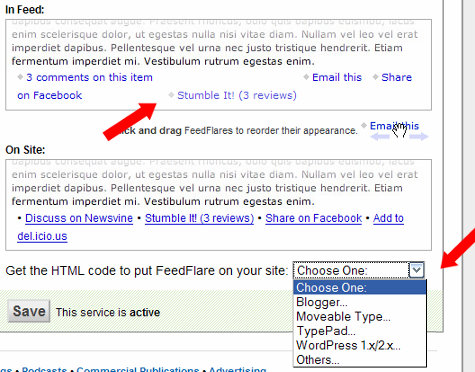Table of contents for Blogging Add-ons
As one of the events in the BlogOlympics (at the silver medal level), you can choose to participate in a blog carnival. At the gold level, you can host a blog carnival. If you’re not sure how to do this, here’s your chance to learn!
Finding a Blog Carnival
To participate in a blog carnival, first you have to find one. BlogCarnival.com features a good list of blog carnivals. You can use their search functions to find carnivals on categories that you write on—parenting, family, homeschooling, etc.
One precaution you have to take as you screen potential carnivals—see if they’re current. A lot of the carnivals listed haven’t published in months. BlogCarnival.com lists lots of carnivals that have been marked as discontinued, but many others haven’t been officially discontinued but aren’t published anymore. Look at the date of the previous and next carnivals—if it’s coming up, you’re probably safe.
Of the carnivals listed on Blog Carnival, my favorite has definitely been the Carnival of Family Life. The brainchild of Kailani at An Island Life, it’s getting to be very popular!
Another way to find a blog carnival is word of mouth. That’s how I found out about Works-for-Me Wednesday, one of the most popular weekly carnivals out there! Every week, bloggers (mostly mothers) share tips on everything from shopping to cleaning to scrapbooking to blogging. Participate this week!
Participating in a Blog Carnival
It’s important when participating in a blog carnival to write an on-topic post. Find out the theme of the carnival, especially if there are special themed editions for holidays. Works-for-Me Wednesday has monthly themed editions on the first Wednesday. An off-topic post is unlikely to be included.
Finally, don’t forget to submit your post to the carnival! Use the method they ask: a Mr. Linky (WFMW Wed), the official BlogCarnival.com submission form (CoFL), or comments or forms on the site itself. When you’re dealing with dozens or even hundreds of entries, it’s difficult to track down all the entries submitted in “unorthodox” ways.
It’s generally best to submit recent posts to the carnival, if not new posts. Some carnivals have rules about the age of submitted posts; be sure to follow those guidelines.
If you’re targeting words people use in search engines (‘keywords’), be sure to include those in the title of your post. They’ll then be used in your link.
Hosting a Blog Carnival
If you volunteer to host a blog carnival (or start your own), there are a few guidelines that will make your hosting stand out.
If you’re using TypePad or WordPress, be sure to send trackbacks or pingbacks. This is often one of the first ways I know that my entry has been included in a carnival.
Try grouping entries in a new way. One of my favorite Carnivals of Family Life was hosted by Digital Rich Daily, where he took the time to categories entries by themes for each letter of the alphabet.
Make sure you use working HTML links. If you use a Mr Linky, it generates JavaScript links. Once you’ve completed your carnival, you can get the HTML code and paste it in the place of the JavaScript code to ensure that your participants get the links. If you’ve asked your participants to link to you, it’s only polite.
Conclusion
Participating in an on-topic blog carnival is a good way to drive traffic to your site and earn links—and hosting is even better! Find a good blog carnival to participate in and complete a silver medal event in the BlogOlympics!
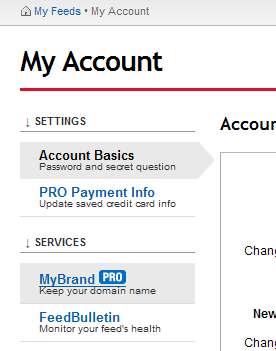 Why is that so cool? It means that, should something terrible happen to FeedBurner, your subscribers are all subscribed to your domain and it will be easy to keep your subscribers and move them. Although BlueHost hasn’t been very helpful (why can’t I just make my own CNAMEs?!), this should be very easy to do, if a bit technical. Danny Sullivan of Search Engine Land wrote a
Why is that so cool? It means that, should something terrible happen to FeedBurner, your subscribers are all subscribed to your domain and it will be easy to keep your subscribers and move them. Although BlueHost hasn’t been very helpful (why can’t I just make my own CNAMEs?!), this should be very easy to do, if a bit technical. Danny Sullivan of Search Engine Land wrote a  line of your feed emails as well as their appearance. As with the Feed Image Burner, you can include a logo to remind readers what blog they’re reading. You can also customize your font (but you’re limited to the five major font families: Arial, Verdana, Trebuchet, Georgia and Times New Roman), size and color of text and links. As with the Headline Animator, using images and colors from your blog can provide a sense of continuity for your readers. My own logo, at right, is a version of my header.
line of your feed emails as well as their appearance. As with the Feed Image Burner, you can include a logo to remind readers what blog they’re reading. You can also customize your font (but you’re limited to the five major font families: Arial, Verdana, Trebuchet, Georgia and Times New Roman), size and color of text and links. As with the Headline Animator, using images and colors from your blog can provide a sense of continuity for your readers. My own logo, at right, is a version of my header. One last capability that isn’t as neat-o as these seven, but is one of the major advantages of FeedBurner is the ability to change your blog address and easily transfer subscribers. Click on Edit Feed Details to find the box where you entered your feed address. Should you move your blog, you can easily update this address to your new one, without sacrificing your subscribers.
One last capability that isn’t as neat-o as these seven, but is one of the major advantages of FeedBurner is the ability to change your blog address and easily transfer subscribers. Click on Edit Feed Details to find the box where you entered your feed address. Should you move your blog, you can easily update this address to your new one, without sacrificing your subscribers. How many times have you clicked on a subscribe button and gotten something like this at right?
How many times have you clicked on a subscribe button and gotten something like this at right?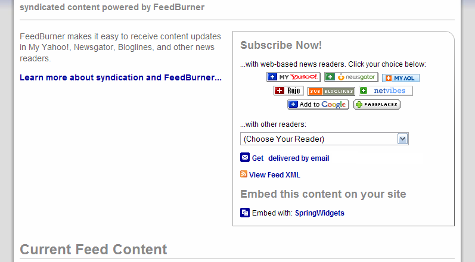
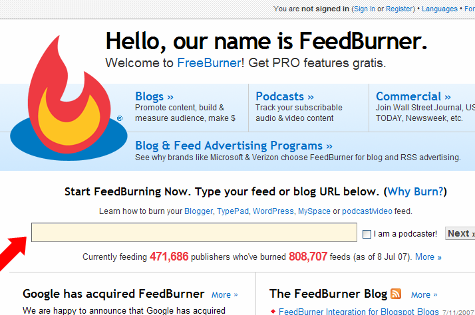
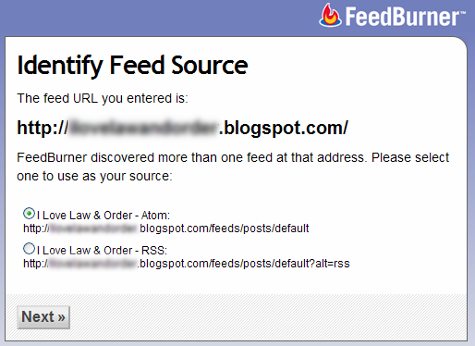
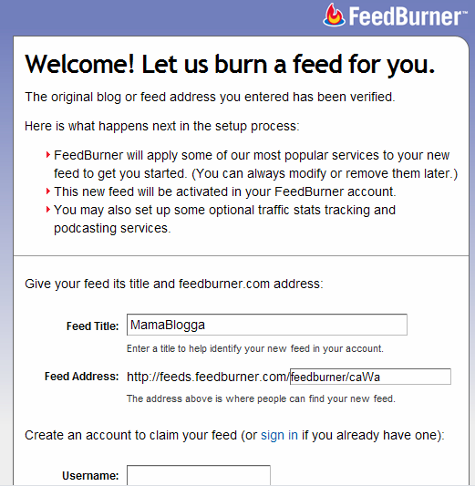
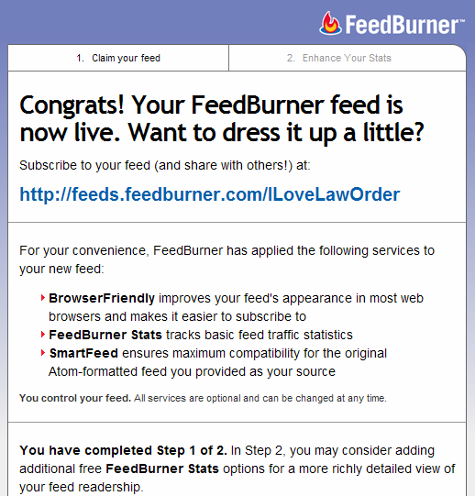
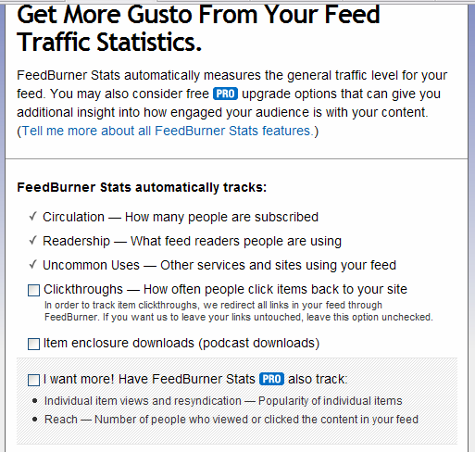
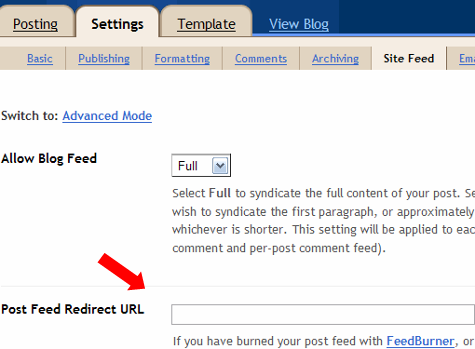
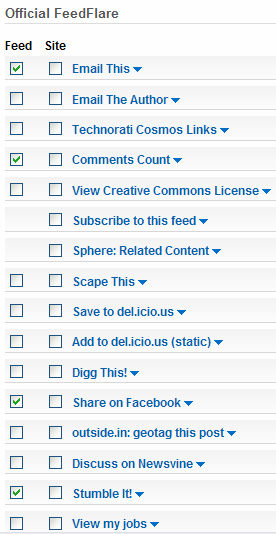 You can customize the way your feeds appear in feed readers with FeedBurner’s FeedFlares, found under the Optimize tag. You can add links to the bottom of your posts to add the story to social sites (like StumbleUpon or Digg), add a copyright notice, add a comment count, and lots more.
You can customize the way your feeds appear in feed readers with FeedBurner’s FeedFlares, found under the Optimize tag. You can add links to the bottom of your posts to add the story to social sites (like StumbleUpon or Digg), add a copyright notice, add a comment count, and lots more. 